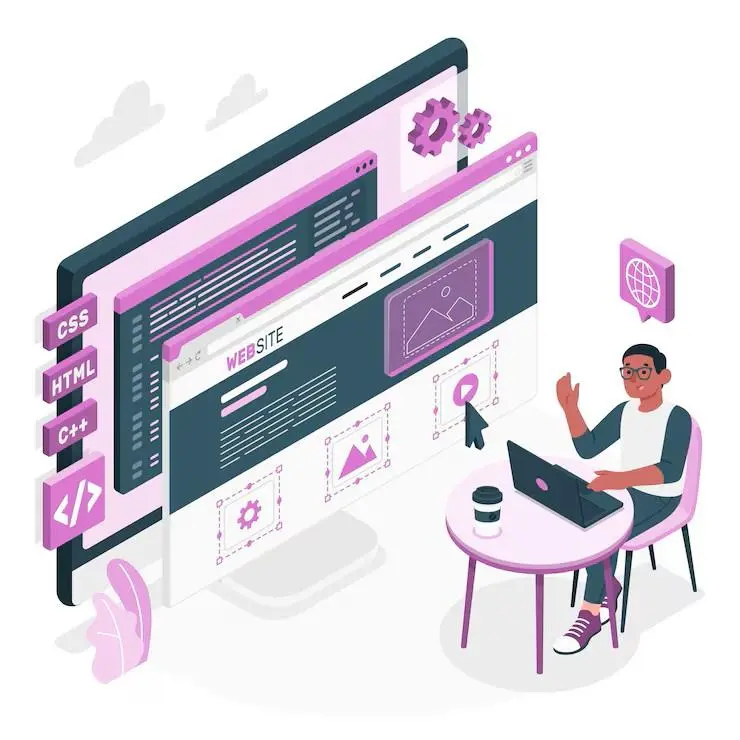Highlights
- Essential strategies to overcome feature overload and cluttered interfaces.
- Importance of mobile optimization for seamless, responsive enterprise web design.
- Tips for improving navigation, information architecture, and user journeys.
- Solutions to enhance website performance and loading times.
- Aligning branding with design for a consistent and trusted enterprise presence.
Creating an effective enterprise website design is important for businesses aiming to build a strong online presence. Yet, even well-resourced enterprises often stumble into common pitfalls that hinder user experience, branding, and functionality.
So, in this article, we will cover some inside takes coming directly from the Tambena design team, on how you can avoid 5 simple mistakes that can elevate website design. Also, you will learn how to address these mistakes while integrating enterprise website solutions to elevate your platform to industry standards.
1. Overloading the Website with Features
The Problem
Enterprises often pack their websites with excessive features, including chatbots, pop-ups, widgets, and multimedia content. While these tools can enhance functionality, an overabundance creates a cluttered interface and frustrates users, detracting from the core message of the website.
The Fix
Adopt a minimalist approach by prioritizing user-centric design. Focus on essential features that align with your business goals. Use heatmaps and analytics to understand which features users interact with the most. By employing enterprise website solutions such as streamlined content management systems (CMS) and scalable designs, you can maintain functionality without overwhelming users.
2. Neglecting Mobile Optimization
The Problem
With the rise of mobile usage, failing to optimize for mobile devices is a cardinal sin in enterprise web design. Websites that don’t offer seamless mobile experiences risk losing a significant portion of their audience.
The Fix
Invest in responsive web design to ensure your enterprise website adapts to different screen sizes. You should take professional design services from a reputable service provider, so you won’t have to compromise on functionality or aesthetics.
Such service providers leverage tools like Google’s Mobile-Friendly Test to identify issues and rectify them promptly. By implementing the best enterprise website design practices, including adaptive layouts and mobile-first strategies, your website will remain accessible and engaging across devices.
Furthermore, test your mobile designs regularly to ensure usability and functionality, addressing issues such as touch-friendly buttons and fast-loading pages.
3. Poor Navigation and Information Architecture

The Problem
A confusing or inconsistent navigation structure can make it difficult for users to find what they need. This not only frustrates visitors but also impacts search engine rankings.
The Fix
Simplify navigation by categorizing content logically, using web interactive tools in your design, and limiting the number of menu items. Use clear, descriptive labels and implement breadcrumb trails for better orientation. Employ enterprise website design tools to map out user journeys and ensure intuitive navigation. Conduct usability testing to uncover pain points and refine the architecture.
Moreover, you can consider integrating a robust search function that provides accurate and relevant results to help users locate information quickly.
4. Ignoring Performance and Loading Times
The Problem
Slow-loading websites drive users away and negatively impact SEO rankings. Enterprise websites with complex designs and high-resolution media often suffer from this issue.
The Fix
Optimize loading speeds by compressing images, minimizing HTTP requests, and leveraging content delivery networks (CDNs). Conduct regular performance audits using tools like Google Page Speed Insights to identify bottlenecks. Adopting lightweight frameworks and enterprise web design solutions ensures your website delivers a smooth and fast user experience.
Also, consider using lazy loading for images and videos to improve performance without sacrificing visual appeal.
5. Failing to Align Design with Branding
The Problem
A lack of brand consistency in enterprise website design creates a disjointed experience that can confuse users and erode trust. From mismatched colors to inconsistent typography, these mistakes can dilute your brand’s message.
The Fix
Develop a comprehensive style guide that outlines your brand’s colors, fonts, imagery, and tone of voice. Incorporate these guidelines into every aspect of your enterprise web design. Collaborate with design teams to ensure every page reflects your brand’s identity. Consistent branding fosters trust and positions your platform as the best enterprise website design example.
Moreover, regularly audit your website to ensure all updates and changes align with your established branding guidelines.
Bonus Tips for Enterprise Website Success
Beyond avoiding the common mistakes outlined above, here are additional strategies to elevate your enterprise website:
- Focus on Security
Employ robust security measures, including SSL certificates, firewalls, and regular vulnerability assessments. Security is a cornerstone of reliable enterprise website solutions. Consider integrating multi-factor authentication (MFA) and end-to-end encryption to protect sensitive data and build user confidence.
- Leverage Analytics
Regularly review website analytics to understand user behavior and optimize accordingly. Data-driven decisions lead to better performance and user satisfaction. Use advanced tools such as heatmaps, session recordings, and A/B testing to refine the user experience continually.
- Accessibility Compliance
Ensure your website meets accessibility standards, such as WCAG compliance, to cater to a wider audience and improve inclusivity. Accessibility features, such as keyboard navigation, alt text for images, and readable font sizes, enhance usability for all users, including those with disabilities.
- Content Strategy
A well-thought-out content strategy complements the best enterprise website design by keeping users engaged. Plan your content calendar around user needs, industry trends, and SEO best practices to drive traffic and conversions.
- Continuous Improvement
Treat your website as a living entity that evolves with your business. Regularly update features, design elements, and content to remain competitive and user-focused. Monitor user feedback and industry developments to identify areas for growth and innovation.
The Role of Enterprise Website Solutions
Such solutions play a pivotal role in addressing these common design mistakes. These tools and platforms offer scalability, robust functionality, and ease of management, making them indispensable for enterprises. Here’s how they contribute to success:
Content Management Systems (CMS)
Modern CMS platforms simplify the process of updating and managing content, ensuring consistency and efficiency across teams.
Customer Relationship Management (CRM) Integration
Seamlessly integrating your website with CRM tools enables better tracking of customer interactions and personalized user experiences.
Scalable Infrastructure
Enterprise solutions provide the scalability needed to handle increasing traffic and growing content requirements.
Data-Driven Insights
Advanced analytics and reporting capabilities empower businesses to make informed decisions based on user behavior and trends.
Real-World Examples of Best Enterprise Website Design
Examining successful enterprise websites can provide valuable insights into effective design strategies:
Microsoft
Microsoft’s website exemplifies a clean, responsive design with consistent branding. The intuitive navigation and clear calls-to-action (CTAs) enhance usability while supporting the company’s vast product offerings.
Salesforce
Salesforce’s website demonstrates the power of a customer-centric approach. With tailored content, dynamic visuals, and seamless CRM integration, it delivers a cohesive and engaging user experience.
IBM
IBM’s website effectively combines modern aesthetics with enterprise-level functionality. Its commitment to accessibility, performance, and branding makes it a standout example in the industry.
Final Say
The journey to creating the best enterprise website design starts with recognizing and rectifying common pitfalls. You need to integrate enterprise website solutions and follow the best practices to ensure an impactful online presence. Moreover, by continuously evolving your website with user feedback and technological advancements, you can maintain a competitive edge and achieve sustained success in the ever-changing digital world.
We hope you find this article helpful. In case, you have any queries or need assistance regarding any kind of designing services for your website feel free to reach out to Tambena Consulting, we will be glad to assist.






